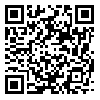BibTeX | RIS | EndNote | Medlars | ProCite | Reference Manager | RefWorks
Send citation to:
URL: http://rjms.iums.ac.ir/article-1-603-en.html
Background & Aim: Attending to the importance of hearing in development of language skills and the essence of hearing loss in meningitis as an acquired hearing loss, this study focuses on hearing assessment and early diagnosis of hearing loss. The purpose of the present study is to apply EOAE, ABR and behavioral hearing tests to evaluate audiologic condition of infants and neonates suffering from meningitis at the acute and recovery stages. Patients & Method: This cross-sectional study included 40 infants and neonates whose ages ranged from birth to 12 years. These patients, 24-72 hours after diagnosis or starting the treatment, were evaluated using ABR test. This test was also repeated 24 hours before discharge or recovery. 7-14 days after discharge or recovery, all the 40 patients were assessed using EOAE and behavioral tests, which could evaluate choclear function besides confirming the results of ABR test. To analyse the data and draw the charts and diagrams, we profited from SPSS, t-test, Fisher test, and EXCEL. Results: According to the results of ABR test, 24-72 hours after diagnosis, 4 patients(10%) showed bilateral severe to profound SNHL(sensorineural hearing loss) and 1 patient(2.5%) showed unilateral severe to profound SNHL. The same results were observed in re-evaluation 24 hours before discharge using ABR test and also in behavioral test 7-14 days after discharge from the hospital. However, ABR test recognized the rest of the cases(35 patients) as normal regarding their hearing abilities. These 35 patients were diagnosed to have normal hearing sense by EOAE test, which was carried out 7-14 days after discharge from the hospital, as well. EOAE, however, indicated that three of the five patients suffering from SNHL presented with abnormal choclear function but the two of them remained normal in this respect. Conclusion: SNHL caused by meningitis, which involved 12.5% of our subjects, is detectable at the acute stage of the disease. Moreover, it can be concluded that meningitis can cause damage not only to choclear nerve but probably to choclear function, too. The damage to choclear function may occur in the presence of the damage to choclear nerve or by itself.
| Rights and permissions | |
 |
This work is licensed under a Creative Commons Attribution-NonCommercial 4.0 International License. |





